Havana, a last dive into Cuban culture… The colonial capital is a movie set lying somewhere between decay and sparkling beauty! With time… / With time everything goes its way / Even the dearest of memories…, sung by French singer Léo Ferré. Who would not dream of shooting a movie in the streets of Havana, perhaps a cinematographic adaptation of the investigations of Police Lieutenant Mario Conde ? How can you not want to go on an adventure with a character from a thriller by Leonardo Padura ! And you, are you ready to dive into an adaptation of “Paisaje de otoño,” (Havana Black) and to discover a snapshot of old Havana ? As every Habanero likes to say, “Cuba es La Habana, y lo demás es paisaje!” (Cuba is La Habana, the rest is just landscape !)
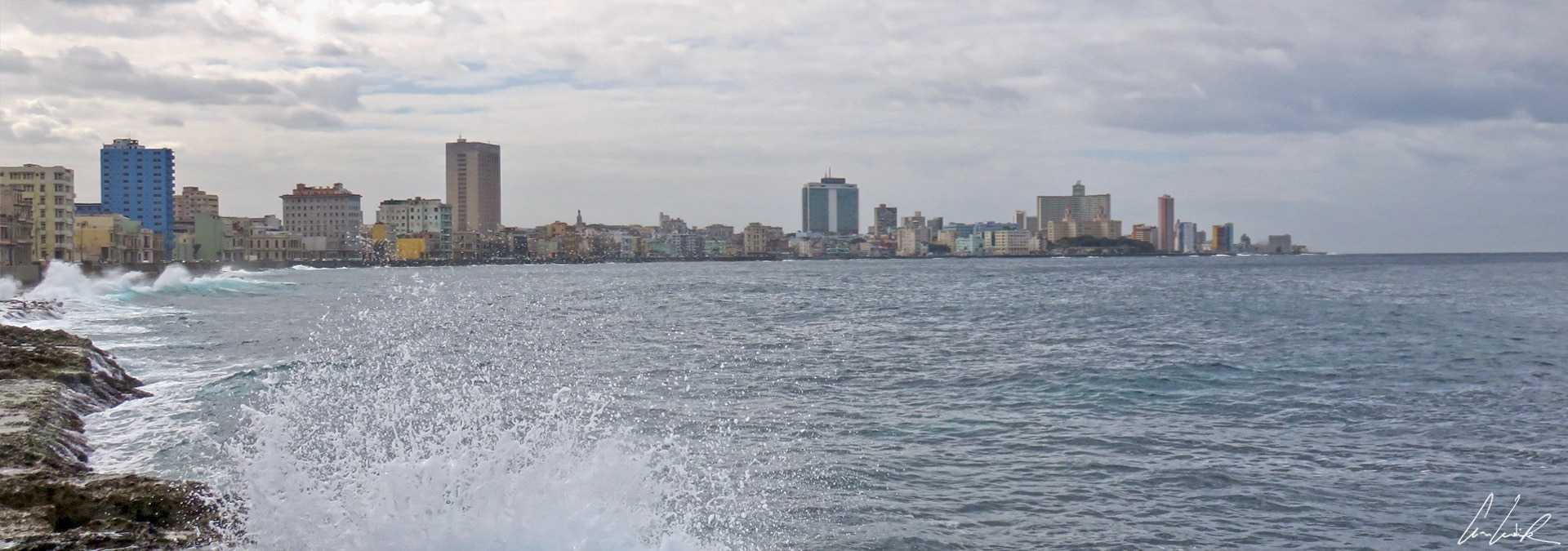
The Malecón
Where do we begin? No doubt on the renowned Malecón, officially known as the Avenida de Maceo. The Malecón runs along the seawall on the north coast of Old-Havana from the Vedado district (Castillo de la Chorrera) to Havana Vieja (Castillo de la Punta,) a distance of approximately 5 miles. Although the Malecón was built to protect Havana from the fury of the Ocean, nowadays, Habaneros stroll and dance on it and, to earn extra income, compete with the pelicans by fishing from it. The Malecón is also a popular spot from which to enjoy the incessant ballet of old cars, vestiges of the years of opulence… The ocean spray has nibbled into the concrete, the tumultuous waves of the ocean burst on the parapet, splashing pedestrians – you can get wet, I did !… The buildings lining on the Esplanade side offer a picturesque sample of the different trends of Havanese architecture. They also show the effect of the time and the aggressiveness of the winds and salt. The houses from the Spanish era are often dirty and decrepit. From the Parque Antonio to the Prado, old houses in pastel tones washed away by the ocean spray give the boulevard a kind of softness that is gradually lost as the “modern” buildings of the 1950s appear. The Parque Antonio Maceo, too noisy and busy to be restful, is home to the Monumento a Antonio Maceo, a mulatto Lt General of the wars of independence known as the “Bronze Titan”, a reference to his skin color, stature, and status. On the other side of the Park is the Capilla la Inmaculada, a neo-gothic convent. If we look back toward the ocean, the Morro Fortress (Castillo de Los Tres Reyes del Morro) is perfectly visible perched on the promontory on the opposite side of the Malecón. This fort was built by the military architect Juan Bautista Antonelli between 1589 and 1630 to protect the entrance to the harbor.

The Morro Fortress
Let’s move on to Habana Vieja (old town)… passing by Centro Habana. We can get lost in the labyrinth of streets while observing Cuban daily life. In the streets, the revolutionary slogans painted on the walls are omnipresent as if the government needs to remind the population of the benefits of the revolution. Cuban life is restricted by shortages: lack of essential products including food, electricity cuts, gasoline rationing, etc. By reading Perdura, I discovered a snapshot of Cuba, a description of daily life and the moral and material difficulties of Cubans… Now, while strolling through the streets of Centro Habana, I can only agree with the reflections on the failure of utopias, both lucid and humorous, of the author and police lieutenant in Havana, Mario Conde… linen drying on balconies, street vendors acclaiming their wares (3 days of salary to buy a pound of onions !), people waiting for the opening of a store on a street corner, others sipping Guarapo juice (cane sugar) while a young boy gets a haircut in a salon. Further away, “apprentice garage workers” attempt the umpteenth makeshift repair on an old máquinas at the neighborhood garage… System D, a procedure relying on the ingenuity and resourcefulness of all, is basic to the daily life of all Cubans! We feel transported back into a 1950s’ movie about prohibition in the United States, except that we are in Cuba and the sound of music (salsa, sound, rumba, cha-cha-cha, boleros, etc.) drifts out of half-open windows all day. The dilapidated buildings, collapsed or just having lost their balconies and roofs over time, and the heavy dust gives Centro Habana a faded side. But, at the same time, you can only marvel at its heterogeneous architecture (Ah, the faded splendor of decrepit pediments !) And this explosion of colors… Is there any danger ? Not at all, popular and colorful Havana is there before our eyes !

The neighborhood garage
Suddenly, we end up at “kilometer zero” in the Cuban capital (like Notre Dame in Paris). Located in the heart of the Cuban capital between Prado, Dragones, Industria and San José streets, the Capitolio Nacional is one of the most imposing buildings in Havana. Similar to the United States Capitol in Washington, D.C. (the illusion is almost perfect with a yellow bus parked in front !) it is necessarily higher, bigger, more beautiful, more I do not know what else, than its American counterpart. It was erected in 1929 under the guidance of the architect Eugenio Raynieri Piedra. It was the seat of the two Chambers constituting the legislative body of the Republic of Cuba until the revolution of 1959. Today it is home to the Academy of Sciences and Technology. The dome, inspired by the Panthéon in Paris, is 302 feet high and was the highest point in Havana until the 1950s. At the time of its construction, it was the third highest cupola in the world. Next door is the majestic, neo-baroque Gran Teatro de La Habana. Crowned on each corner by winged victories, it is THE venue for the performing arts in Cuba. It is decorated with marble statues and magnificent sculptures by Giuseppe Moretti representing allegories depicting benevolence, education, music, and theater… The Gran Teatro de La Habana has several rooms for theatrical performances, concerts, and conferences as well as an art gallery and several rehearsal rooms. Opposite the Capitol is Central Park, a rendezvous for old American cars, carefully restored, with shiny chrome and flamboyant colors. They are waiting for you, wisely parked for a tour of the town that will go by the Prado (Paseo de Marti), the very busy historical avenue, lined with trees and bronze statues of lions.

The Gran Teatro de La Habana
The Capitol is also one of the gateways to Habana Vieja. The change of scenery is almost shocking: colored facades too clean, too new, musicians, bars, restaurants, coco-taxis, models… and flocks of tourists! We leave the storage room version of Havana to admire its shop window. Habana Vieja (the old town) was declared a UNESCO World Heritage site in 1982. In Habana Vieja, everything is carefully arranged so that reality corresponds to the picture postcard image that the city wants to project. Massive restoration work has made it possible to recreate the historic splendor of the old center: treasures of baroque, neoclassical and Art Nouveau architecture follow one after another… Plaza de Armas is the oldest part of the historical center and surrounded by the El Templete monument, a small neoclassical temple where the first council of the city met, the Palacio de Los Capitanes Generales (Palace of the Captain Generals,) the former official residence of the governors and today the Museum of the City, and El Castillo de la Real Fuerza (Castle of the Royal Force.) This fortress, the oldest military building in the country, was built between 1558 and 1577 on the former site of the Fuerza Vieja (Old Force) by engineer Bartalomé Sanchez. In 1634 the famous watchtower was added and topped with the weathervane “Giraldilla”, a reproduction of the oldest bronze statue in Cuba by Jeronimo Martinez Pinzon in 1632. A true symbol of the city and shown on the bottles of rum in the Havana Club ! A little further on, the Plaza de San Francisco, is one of four plazas laid out in the 17th century and features buildings with imposing arches, including the Lonja del Comercio, a Commercial Market built in 1909 and which served as the Stock Exchange until the revolution in 1959. There is also the Terminal of the Sierra Maestra, a relic of the Golden Age of the export of commodities prized in Europe… Finally, on the South side of the square sits the impressive Basilica of San Francisco de Asis. The Plaza Vieja, the open market where, among other things, slaves were traded, was completely restored into a homogeneous ensemble of houses with arcades, balconies, wrought iron gates and courtyards… Few Cubans are found here, only “extras” and jineteros (defined by the U.S. Department of State as “street jockeys who specialize in swindling tourists” through manipulation and kindness to extort some CUC). The extras, like these two women dressed in traditional colorful clothes, are selling a dream by giving color and gaiety to the streets of the old city… here, there is an affable grandmother with a huge cigar, further away a Cuban with his guitar playing the first notes of Chan Chan, “ De Alto Cedro voy para Macané / Luego a Cueto voy para Mayarí / El cariño que te tengo / Yo no lo puedo negar…
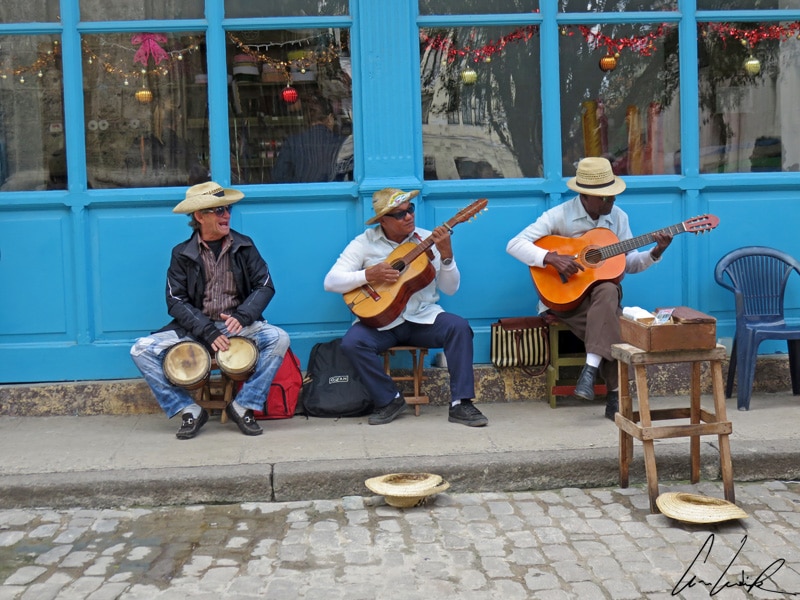
Habana Vieja, musicians
A few steps away lies Calle Obispo, a narrow commercial corridor of well-known stores. This busy pedestrian street links Plaza de Armas with Parque Central. For Habaneros it is a pleasure for the eyes only because who can afford the latest fashions in a country where eating remains difficult? But, far more famous than Obispo (the French singer), “Plus que tout au monde,” the local star is, of course, Ernest Hemingway. He is immortalized in the bar-restaurant El Floridita, known as the “Cradle of the Daiquiri.” In El Floridita the Cuban artist José Villa Soberón’s life-size bronze statue of Hemmingway is leaning on the end of the bar near the wall where he probably drank many daiquiris. Hemingway even invented a new recipe, the “Papá Doble”, a double ration of rum, without sugar! In this hangout, Hemingway wrote part of his famous 1940 novel “For Whom the Bell Tolls“, based on his experience as a Spanish Civil War correspondent and featuring an American protagonist, Robert Jordan. A few steps from the bistro is the luxurious Ambos Mundos hotel where Hemingway stayed in room 511 in the 1930s. Now the room is a mini-museum of “Papá” nostalgia. By the way, did Mario Conde finally solve the mystery of the corpse unearthed in Ernest’s garden ? Um, huh, Hemingway, a murderer? Even the disillusioned hero of Perdura has doubts when he exclaims, “But you’ve got to have the balls to kill a man…” But for the last word on the story, read “Adios Hemingway…” Finally, let’s close this investigation by visiting the Plaza de la Revolución, a vast paved area formerly used to celebrate major events like the launching of the literacy campaign, the farewell ceremony for Che Guevara and the never-ending speeches of Fidel Castro… On the south side, the José Marti memorial dominates the square: a 358 foot tall star-shaped tower with a 59 foot tall white marble statue of Marti at the foot of the tower and surrounded by six columns and gardens. The memorial was built in 1958. From 1879 to 1979, Cuba was divided into six provinces. Each column represents a province. The square is surrounded by gray buildings, notably the building of the Ministry of the Interior on which is represented Che Guevara (Hasta Siempre Comandante) and the telecommunications building where Camilo Cienfuegos is enthroned. Cienfuegos is considered the third outstanding figure of the Cuban Revolution: “Hasta la vistoria siempre !”
To travel to Cuba is to dive into the heart of a story, both magnificent and terrible, and to give yourself the opportunity to form an opinion, certainly more nuanced and complex than the common clichés. Now, at the end of the journey; various feelings come over me… This country does not leave you unchanged! Thinking of all the colors of the island, I still wonder if “misery would be less painful under the sun” as sung by Charles Aznavour (Emmenez-moi).
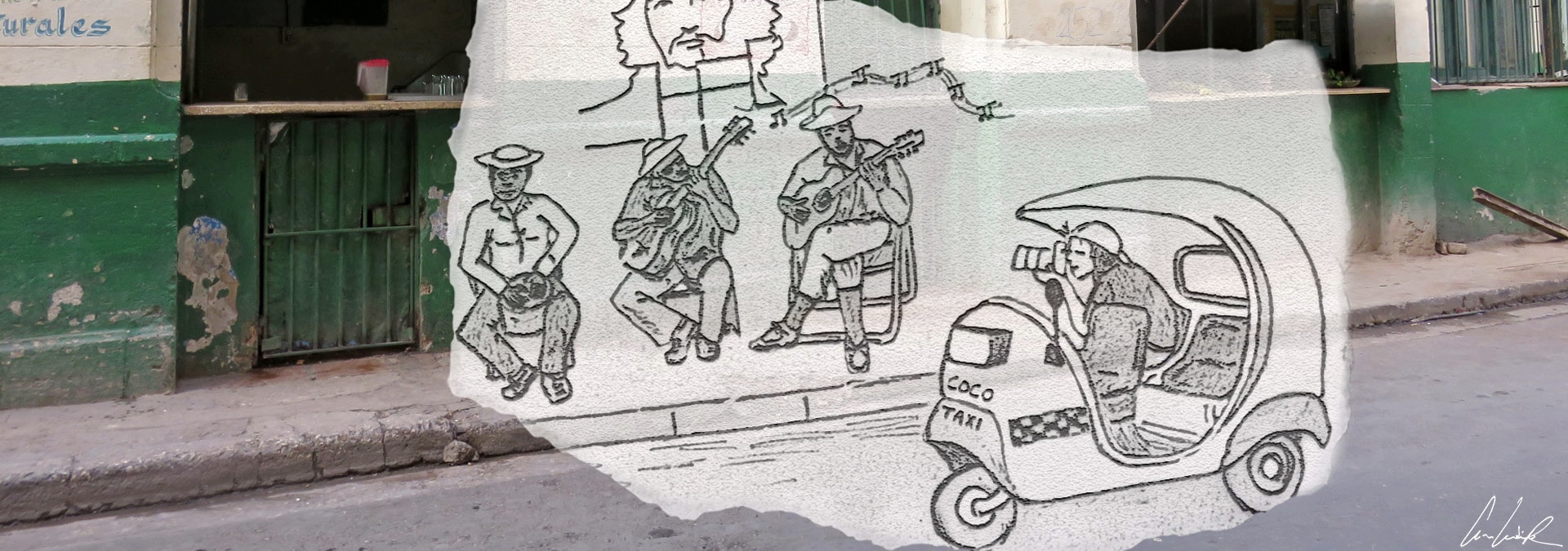
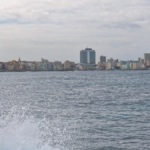
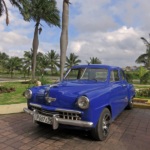
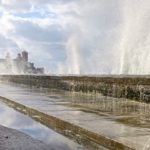
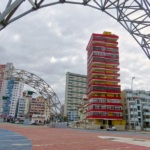
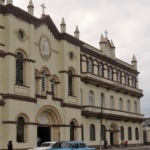

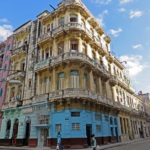

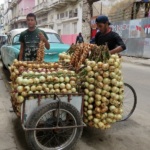

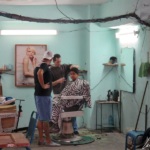

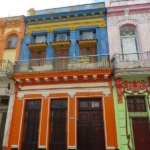

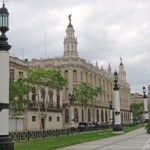

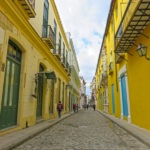
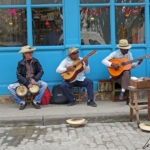
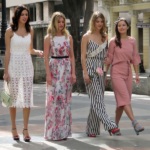
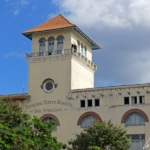



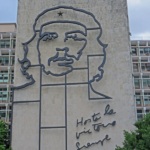



This was such a poetic description of visiting Cuba, definitely inspiring! Thanks for sharing this 🙂
Thank you. Cuba is a vastly interesting country, full of vibrant culture, kind people and beautiful landscapes. So soak up every bit of beauty and culture the country has to offer, and get to know the resourceful people that live there. They make Cuba the beautiful place that it is !
What a fascinating place and you’ve described it beautifully. Definitely one to ponder on for some time – mixed feelings about the reality behind the picture-postcards.
Because, while Cuba is amazing (and it really is), it is also challenging, heartbreaking and tries your patience in more ways than you can count 🙂
This article makes me want to pack up and leave. Cuba has been on my lists for years and the way you’ve described it only makes me want to go more. Love the picture of the musicians in the old part of town!
Cuba is definitively an interesting country, with vibrant culture, resourceful people and beautiful landscapes. Hope you can visit it soon 🙂
Some really unusual and artful pictures on here. And a very interesting post. I hope to get to Cuba soon! Thanks for inspiring me 🙂
Louise
Cuba is an extraordinary adventure I recommend to you ! This country, full of contradictions, does not leave you indifferent. It is both dazzling and decadent… 🙂
Celine,
What a fantastic post. There are so many mix reviews about Cuba. I guess here is always the good and the bad about every place we visit. Thank you fro your description and honesty. It looks great! 🙂
Telma @ Blank Canvas Voyage
Thank you Telma 🙂 Cuba is definitively an interesting country, with vibrant culture, resourceful people, beautiful landscapes, more nuanced and complex than the common clichés we all have in mind. This country, full of contradictions, does not leave you indifferent !!
This is an amazing post! This is really meaningful content you’ve created here…It makes me want to dive into the history and culture more and I definitely must before I visit. Great job!!
Best,
Rebecca
Thanks 🙂 When we talk about Cuba, the first images that come to mind make our head spin and fill us with desire: Salsa, cigar and mojitos, old cars, white sandy beaches etc. But, Cuba is much more than all this… it is a tricky, complicated subject to take on !
I absolutely love how you describe the various aspects of Havana! Your words truly take me back to this place 🙂 So well done!
Thank you ! Brought back memories… Habana is really a movie set lying somewhere between decay and sparkling beauty !
This article was so informative and very well written. I could feel the nostalgy coming out of it! I really like the idea that to travel to Cuba is to dive into the heart of a story, both magnificent and terrible. Can’t wait to go one day to shape my own opinion of the country!
I hope that you will discover Cuba yourself, which resembles no other country ! Cuba is much more than Salsa, cigar and mojitos, old cars, colonial architecture, lobsters, white sandy beaches, and colourful fish… This country has a strong and unique identity 🙂
This was beautifully written! I really appreciate your candidness. Also, lovely pictures!
Thank you 🙂 . Cuba is a tricky, complicated subject to take on. Social media tends to present Cuba as all sunshine and colourful buildings… but the reality of life there is quite different !
I loved this post! You have really brought to life Havana and it really makes me want to go back!
Thank you 🙂 As every Habanero likes to say, “Cuba es La Habana, y lo demás es paisaje!” – Cuba is La Habana, the rest is just landscape !
Sounds like such an interesting place to visit. I had no idea it was classified as UNESCO site. It is a place I had never thought of visiting but you have really inspired me.
Yes, it is. Habana Vieja (the old town) was declared a UNESCO World Heritage site in 1982 ! I’m so happy to inspire you to be adventurous and to go to Cuba one day 🙂
I really love how you mention the song in the beginning – I had it play while reading the article. It creates this mellow, sweet mood that really does describe the feeling of Havana and Cuba in general. Not that usual Guantanamera-pineapple-drinks-all-is-dance, but the scenes behind. I think you have managed to capture the other side of Cuba really well!
When I visited the Havana, I immediately had this Léo Ferré song in mind 🙂 : “With time… / With time everything goes its way / Even the dearest of memories…” was the perfect description of my feelings of Cuba !
Beautifully written – I felt like I was there with you 🙂
Xx Eleonore
Thank you ! How you say it actually makes it a more meaningful piece of writing 🙂
I see lovely comments here 🙂 . Sure, you have a gift for the writing, so carry on ! It’s nice to read you articles and to dive into the atmosphere through the photos.
Bravo
Thank you Olga :-). I will carry on writing for sure ! Through my stories, I hope to inspire adults of all ages to be adventurous and to enrich their lives by captivating the power of travel and cultural exploration…
Your writing is dreamy and beautiful! Loved the descriptions. This line..”To travel to Cuba is to dive into the heart of a story, both magnificent”. Wow! After living in Miami amongst Cubans for so long, it’s nice to see other’s perspectives.
Thank you so much for your kind words 🙂 I have realized beautiful writing could make you feel a certain way and you could carry those feelings in you for a long, long time. And I really, really wanted to do that.
Oh wow, Cuba looks so wonderful and your descriptions are beautiful! It wasn’t really a place on my radar before to travel to, but it is now. Thank you!
Cuba was not on our initial bucket list but we thought “Let’s visit Cuba, before it changes!”. And we did it 🙂
Very cool imagery in this post. I felt similarly about Havana when I was there. It really traps you and shows you it’s raw, true self. We were so lucky to be taken out by locals when we were there so we saw much more than the same old tourist haunts. Thank you for the post 🙂
Happy to know that we share the same mixed feelings about Havana !
I love the way your write! It is so poetic! We visited Havana earlier this year and I have to agree with the shortages of supplies for locals. It was so disheartening. Love your pictures. And what an apt title for this wonderful post.
I realised that if you are going to say something important about the place it is best if you try to say it beautifully 🙂 I don’t mean like picking flowers or writing on fancy stationery. I mean how you say it actually makes it a more meaningful piece of writing. I am always womdering: can I make somebody feel this in a deeper way ?
I love your post, it just brought me straight back on the streets filled with contrasts of Havana! It is indeed hard to imagine how people actually live here for most of the people visiting this place, but for me, coming from a ex communist country it was like a walk in the past, even though the streets of my home country are not so colorful and full of life and songs like the ones in Havana.
For sure, Cuba has a strong and unique identity, marked by Communism since the end of the 1950s, by its multiethnic population, and by its mesmerizing culture of music and dance… Time seems to have stopped: there is Spanish colonial architecture, 1950s-era cars, bicycles, horses, people playing dominoes, ladies in the street, and even at the end of the day people sitting on the front steps of their house for the last gossip of the day…